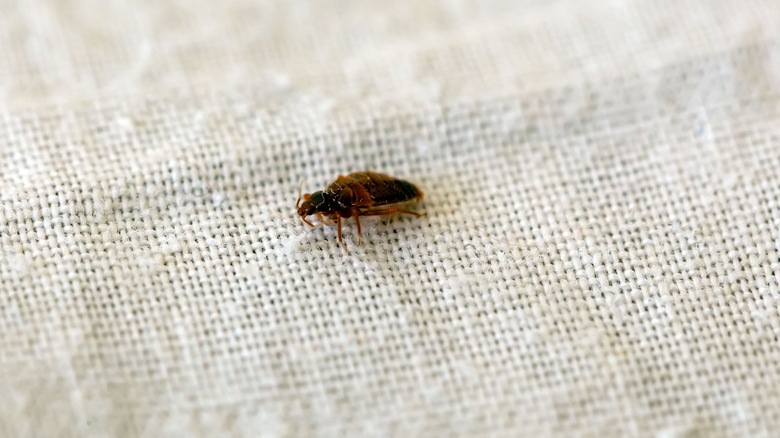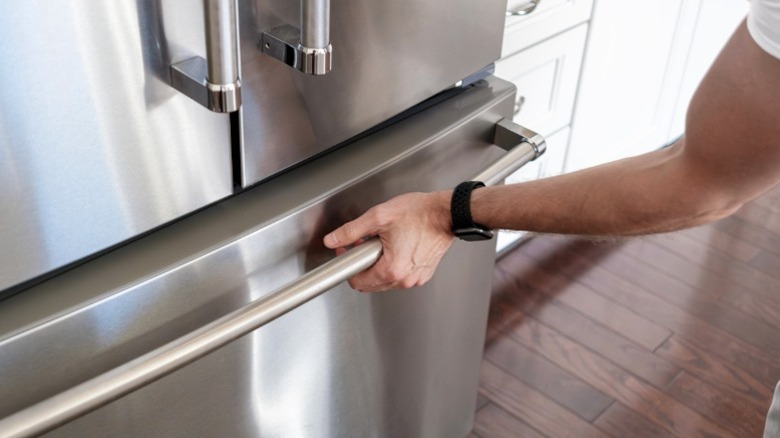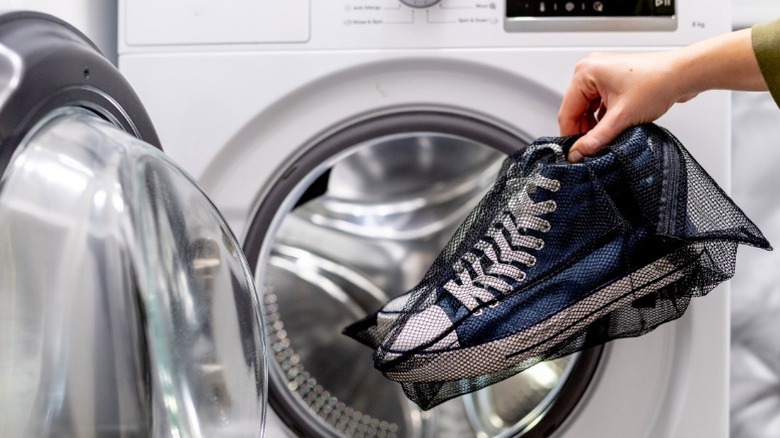The Freezer Hack People Use To Get Rid Of Bed Bugs And Why You Shouldn't Try It
Getting rid of a bed bug infestation becomes a top priority at the first sign of bites on the body or blood spots around the bed. Professional help isn't always something you budget for, though, so it's understandable that many prefer to take matters into their own hands when possible. Given the speed at which bed bugs can spread, fast and thorough elimination is crucial. But as hardy as these pests are, there are several simple DIY ways to kill them and stop them from moving around the home if you find bed bugs sleeping with you. It often takes a multi-faceted approach to get the efficient results anyone needs when dealing with bed bugs, and for many homeowners, that includes using the freezer.
A proven method for killing bed bugs, freezing is a popular hack to manage small, delicate items, like clothing or shoes. It might also be one of the biggest mistakes people make when dealing with bed bugs. For efficiency, research suggests you might want to look toward other techniques. As easy as it is to toss your items in the freezer, it can also be slow and uncertain, two traits you definitely don't want in a bed bug-eradication effort. Some experts recommend items may even need to freeze for up to four days to ensure complete eradication. Generally, it isn't a reliable or practical option. And with so many equally convenient yet far more effective tools out there, your freezer should, at most, be a last resort when dealing with a growing infestation.
Why the freezer shouldn't be your first choice for handling bed bugs
To see why freezing isn't preferred for managing bed bugs, let's look at the average freezer. Household freezers typically operate at an ideal temperature of around 0 degrees Fahrenheit. Most have a lower limit of roughly -10 degrees. Temperatures in the unit aren't always consistent, though, due to variables like the compressor cycling and the door opening.
Now put that against the cold that bed bugs can stand. A study from the Journal of Economic Entomology found bed bugs reach 100% mortality at 80 hours in sustained temperatures of 3.2 degrees Fahrenheit. The colder it is, the faster the bugs and eggs die. At -4 degrees Fahrenheit, die-off can occur in two days. Though some freezers can reach that temperature, it's an unreliable option nevertheless. Insulation from infested materials, freezer temperature changes, cold hardening, and several other factors affect how long it takes for bed bugs to die. If they don't freeze long enough, they may even recover and continue feeding. According to the EPA, many freezers simply don't get cold enough to kill bed bugs.
While freezing is generally a trick to avoid trying when dealing with bed bugs, you may be low on options. If you must use your freezer, put infested items in sealed bags. Freeze at 0 degrees Fahrenheit for at least 3 ½ days or -4 degrees for 48 hours. Check the freezer temperature frequently to ensure it's consistently cold.
Better ways to kill bed bugs with household items
You'll want to use multiple techniques at once to kill bed bugs and stop them from spreading, such as frequent vacuuming, setting traps, and using desiccant dusts, with freezing being a possible route for addressing smaller items. Given the long time that freezing can take to work, though, it's often worth going another direction and applying heat instead. Using a hair dryer or steam can get rid of bed bugs lurking in your wooden furniture, baseboards, beds, and other nooks and crannies. Meanwhile, smaller items that would normally go in the freezer could potentially go in the dryer. Set your dryer on high, letting it run for roughly 30 minutes to kill bed bugs and their eggs. Use a shoe rack for items that can't tumble, or put them in a mesh bag you can pin in the dryer door.
Bed bugs are notoriously sneaky, quick to reproduce, and subsequently tough to eradicate on your own. Applying an integrated approach is crucial for DIY extermination. Yet frequent monitoring should continue well after you think you've killed all the bugs. In many cases, you'll have to call a professional. Using professional-grade equipment, most experts apply high heat to entire rooms. Heating devices penetrate every corner of the space at once to give bed bugs no place to hide. Although it can cost a few thousand dollars to treat a whole home, calling in a pro early is the surest and quickest way to keep these persistent pests away for good.


